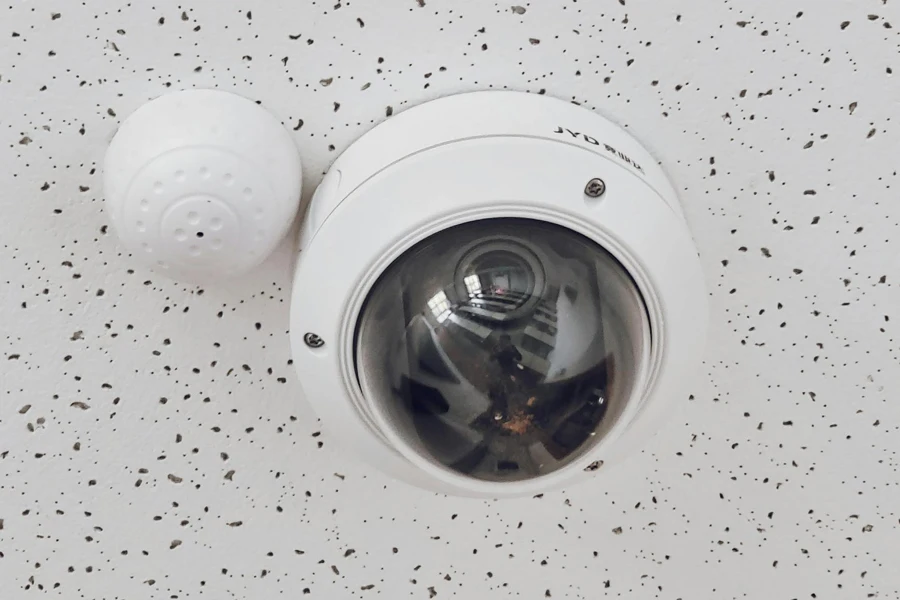Table of Contents
● Introduction
● Market overview
● Things to consider when selecting products
● Top surveillance cameras and their features
● Conclusion
Introduction
In today’s security-conscious world, the role of surveillance and IP cameras has become increasingly critical. As technological advancements propel the market forward, these cameras offer not just standard monitoring but sophisticated analytical tools, enhancing both residential and commercial security. With the global market expected to grow significantly by 2030, driven by a compound annual growth rate of 13.9%, businesses and homeowners alike are recognizing the importance of integrating these devices into their security setups. The shift towards smart homes and IoT-enabled devices has further spurred the demand for IP cameras that offer seamless connectivity and enhanced coverage. Selecting the right camera has thus become a pivotal decision, reflecting the importance of staying updated with the latest in surveillance technology.
Market overview
Current market valuation and expected growth

The IP camera market is currently witnessing a significant upsurge, with a valuation of USD 11.36 billion in 2022. According to Grand View Research, this market is projected to expand at a compound annual growth rate (CAGR) of 13.9% from 2023 to 2030. This growth is fueled by the increasing demand for advanced security solutions that incorporate the latest technologies. Enhanced connectivity, improved resolution, and greater integration with cloud technologies are pivotal factors propelling market expansion. As businesses and homeowners seek more robust security solutions, the need for IP cameras that offer comprehensive monitoring and easy integration is becoming imperative.
Technological advancements
Technological advancements are a major driver in the IP camera sector. Innovations such as high-definition video quality, motion detection algorithms, and integration capabilities with other smart devices are making IP cameras indispensable in modern security systems. Infrared and night vision capabilities have also seen significant improvements, providing clearer images in low-light conditions. According to Business Watch Group, the diversity of camera types now available, from fixed to pan-tilt-zoom (PTZ) models, allows for tailored security setups that meet specific needs and environments.
Trends in consumer preferences
Consumer preferences are increasingly leaning towards smart home ecosystems, where security systems are seamlessly integrated with other home automation products. The demand for network/IP cameras that can be managed remotely via smartphones or computers is rising, indicative of a broader trend towards interconnected smart home solutions. The shift towards IP-based surveillance systems is driven not only by the enhanced security they offer but also by their flexibility in installation and scalability. This trend underscores a growing market segment that prioritizes convenience, connectivity, and comprehensive surveillance capabilities.
Things to consider when selecting products
When selecting surveillance products, a deep understanding of technical specifications is crucial to align with specific security needs effectively. Resolution and field of view (FOV) are paramount; higher resolution cameras capture finer details, crucial for identification purposes, and a wider FOV can significantly reduce the number of cameras needed to monitor the same expanse, making the system both cost-effective and expansive.
Resolution and field of view

Higher resolution cameras capture more detailed images, crucial for identification and monitoring purposes. A wider field of view means fewer cameras are required to monitor the same area, making the setup more efficient and cost-effective.
Storage Options
Storage options play a pivotal role in the functionality and security of surveillance systems. Local storage solutions like hard drives offer robust security and fast access to data. In contrast, cloud storage provides scalability and remote accessibility but may incur ongoing costs.
Camera types: Fixed vs. PTZ
The choice between fixed and PTZ (Pan-Tilt-Zoom) cameras depends on the specific needs of the surveillance area. Fixed cameras are ideal for continuous monitoring of a set location, while PTZ cameras offer flexibility to cover larger areas with their ability to move and zoom.
Night vision capabilities
Night vision technology is crucial for effective surveillance in low-light conditions. Standard night vision cameras use infrared light to produce black and white images, while advanced models with colored night vision use ambient light to produce clearer, color images.
Smart home compatibility
Integration with other smart home devices enhances the utility and efficiency of surveillance cameras. Compatibility allows for streamlined control and automation within a smart home ecosystem, leading to a more responsive and interconnected security setup.
Top surveillance cameras and their features

Surveillance technology has evolved to include a diverse array of camera types, each tailored to specific security needs. Among the most prevalent are Dome, Bullet, C-Mount, PTZ (Pan-Tilt-Zoom), and Network/IP cameras. Each type offers unique features suited for different surveillance scenarios.
Dome cameras
Dome Cameras are valued for their discreet design, which makes them ideal for use in public spaces like retail stores or hotels. The dome-shaped casing not only makes the camera direction ambiguous, thereby deterring criminal activity, but also protects the camera from vandalism. Their ability to rotate 360 degrees allows comprehensive monitoring of a wide area.
Bullet cameras
Bullet Cameras are characterized by their long, cylindrical shape, making them highly visible and effective as a deterrent. They are especially useful for long-distance viewing and are commonly equipped with features like high-resolution imaging and infrared night vision. Their robust design is suited for outdoor environments, resistant to harsh weather conditions.
C-Mount cameras
C-Mount Cameras offer a versatile option due to their detachable lenses, which can be swapped to adjust the field of view or focus distance. This makes them particularly suitable for use in environments where monitoring requirements might change, such as industrial settings or large commercial areas.
PTZ cameras
PTZ Cameras provide the capability to pan, tilt, and zoom the lens remotely. This flexibility makes them perfect for areas requiring active monitoring, such as large public squares or parking lots. Operators can adjust the camera’s focus on different areas of interest in real-time, responding dynamically to any suspicious activities.
Network cameras
Network/IP Cameras represent the cutting edge in surveillance technology, offering high-definition video that can be transmitted over the internet. These cameras are integral to modern security systems, allowing for remote monitoring from any location. Additionally, many Network/IP cameras now feature AI-enhanced capabilities such as motion detection and facial recognition. These innovations not only improve the precision of surveillance but also significantly reduce the rate of false alarms by distinguishing between human activities and irrelevant movements.
The continual advancements in camera technology, especially the integration of AI, have transformed surveillance from a passive security measure to a dynamic and proactive tool. These technologies enable more effective monitoring and quicker responses to potential security threats, marking a significant leap forward in the capabilities of surveillance systems.
Conclusion

In conclusion, the surveillance and IP camera market has significantly evolved, offering a diverse range of camera types and technologies to suit various security needs. From Dome and Bullet cameras to advanced PTZ and Network/IP models, each type provides unique features that enhance surveillance capabilities. The integration of AI technologies, such as motion detection and facial recognition, further refines the effectiveness of these systems. Choosing the right camera is critical—not only does it ensure comprehensive coverage of the monitored area, but it also maximizes the return on investment by catering precisely to specific security requirements. As technology advances, the importance of staying informed and selecting appropriate surveillance solutions becomes more crucial in maintaining robust security protocols.




